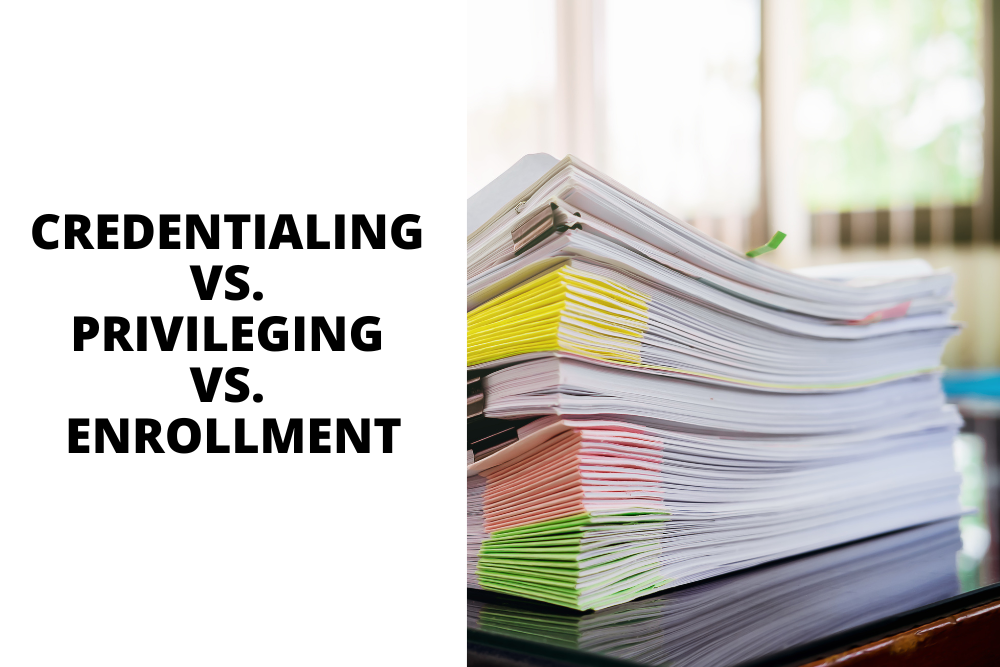Navigating medical billing and administration can feel like solving a complex puzzle. Terms like credentialing, privileging, and enrollment are often used interchangeably, but they represent distinct processes with unique implications for healthcare providers and facilities. For practice managers, understanding these differences is critical to ensuring smooth operations, maintaining compliance, and optimizing revenue cycles. Let’s break it down.
Credentialing: Verifying Qualifications
Credentialing is the process of verifying a healthcare provider’s qualifications, ensuring they meet the standards required to deliver safe, high-quality care. Think of it as a thorough background check for medical professionals.
Key Steps in Credentialing:
- Application: Providers submit detailed information about their education, training, licenses, and work history.
- Verification: Credentialing entities verify this information with schools, licensing boards, and past employers.
- Review: A committee evaluates the verified data to confirm the provider’s qualifications.
- Approval: Once approved, the provider is credentialed.
- Monitoring: Ongoing checks ensure continued compliance, with re-credentialing required periodically.
Why It Matters: Credentialing is the foundation of a provider’s ability to practice legally. Without it, they cannot work in a healthcare facility or bill for services.
Privileging: Defining Scope of Practice
While credentialing confirms who a provider is, privileging defines what they can do within a specific facility. It outlines the procedures and treatments a provider is authorized to perform based on their expertise.
Key Steps in Privileging:
- Application: Providers request specific privileges aligned with their training and experience.
- Verification: The facility verifies the provider’s qualifications for the requested privileges.
- Peer Review: A committee of peers evaluates the application.
- Approval: The facility grants or denies the privileges.
- Monitoring: Ongoing oversight ensures providers maintain competency.
Why It Matters: Privileging ensures patient safety by allowing providers to perform only those procedures they are qualified to handle.
Enrollment: Enabling Reimbursement
Enrollment is the process of joining an insurance network, enabling providers to bill and receive payment for services rendered.
Key Steps in Enrollment:
- Application: Providers apply to join an insurance network.
- Review: The payer reviews the application and verifies credentials.
- Approval: Once approved, the provider is enrolled and can bill the payer.
Why It Matters: Without enrollment, providers cannot receive reimbursement from insurance companies, whether private, commercial, or government programs like Medicare and Medicaid.
How These Processes Work Together
Credentialing, privileging, and enrollment are interconnected. Credentialing establishes a provider’s qualifications, privileging defines their scope of practice, and enrollment ensures they can bill for their services. Together, they form the backbone of a compliant and efficient revenue cycle.
For practice managers and healthcare providers, understanding the differences between credentialing, privileging, and enrollment is essential. By mastering these processes, you can streamline operations, reduce delays, and maximize revenue. Start by reviewing your current workflows and ensuring each step is handled with precision.

